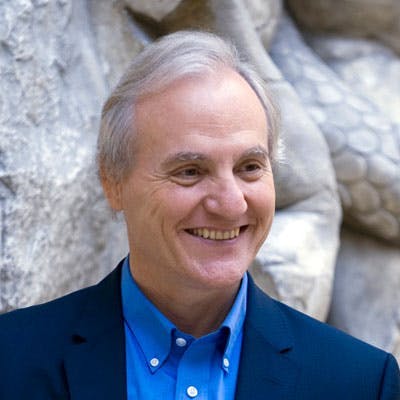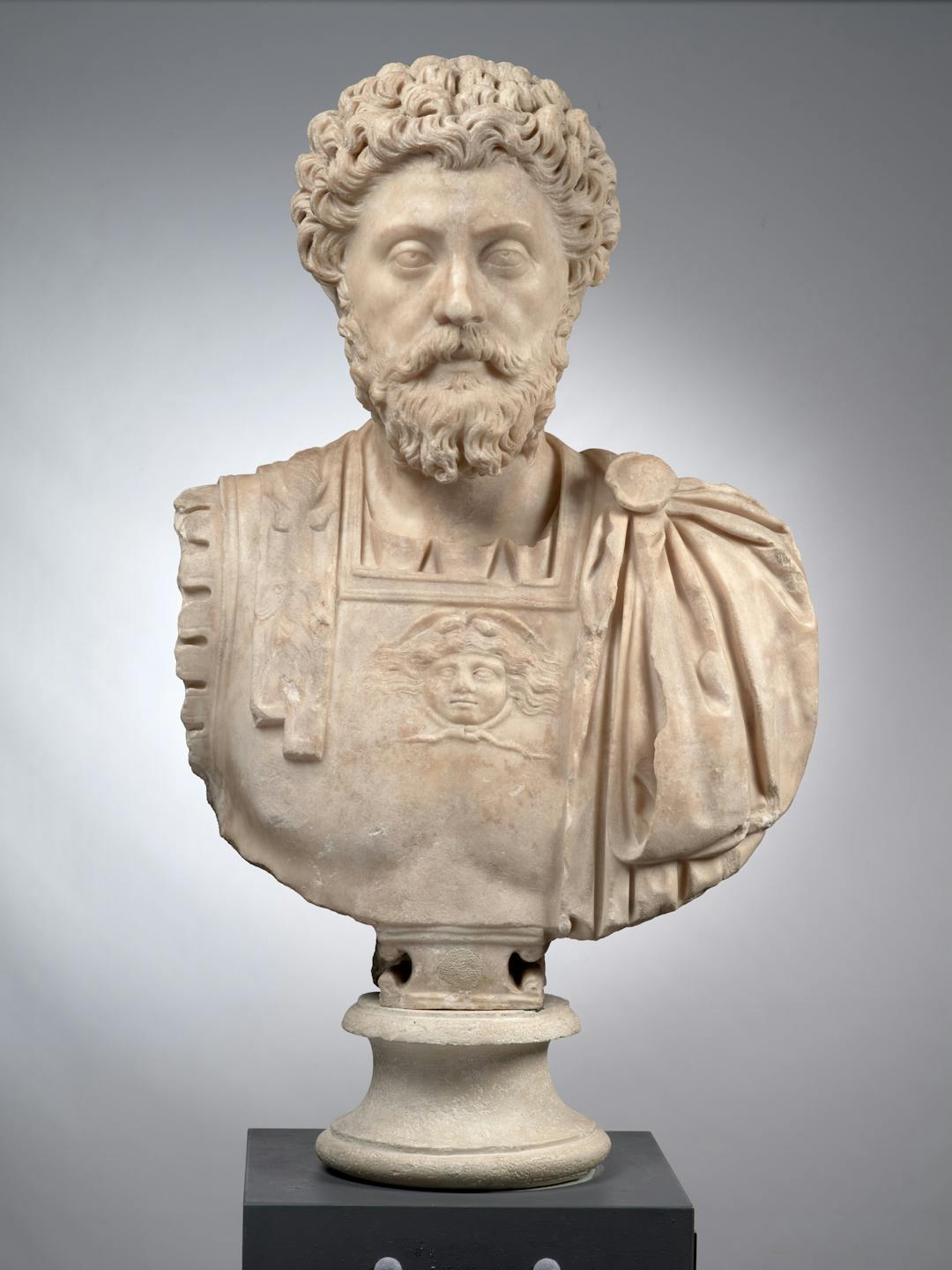Ernst Fehr
The role of neurobiology in social and economic decision-making
Intro
Voted the most influential economist in Austria, Germany, and Switzerland,1 Ernst Fehr specializes in neuroeconomics and behavioral economics, with specific interests in fairness and social cooperation. His research, which incorporates elements of game theory and experimental economics, has informed the understanding of the evolutionary and neurobiological bases of altruistic behavior.
Fehr has been described as a leader in his field,2 with his work putting him at the forefront of behavioral science research. He has shed light on the mechanisms that underlie important areas of human behavior, advancing our understanding of how we make the decisions. Furthermore, the bridge he has built between biology and economics has encouraged an interdisciplinary approach to the study of human behavior, a feat gaining more and more traction among researchers in the behavioral sciences.
On their shoulders
For millennia, great thinkers and scholars have been working to understand the quirks of the human mind. Today, we’re privileged to put their insights to work, helping organizations to reduce bias and create better outcomes.
Inequity aversion
Why we desire fairness and avoid inequalities
Inequity aversion describes the cognitive bias that causes us to avoid inequality. Understanding this bias allows researchers the chance to understand why we make certain decisions, and can also help us make decisions based on logic and reason.
Inequity aversion was first introduced in Elaine Hatfield, Ellen S. Berscheid, and G. William Walster’s 1978 book, Equity: Theory and Research.3 In their 1999 paper, “A theory of fairness, competition, and cooperation,”4 Fehr and his colleague, Klaus M. Schmidt, built upon the work done by Hatfield et al., providing an updated definition of the bias. They described inequity aversion as a resistance to outcomes perceived as inequitable, which arises from a preference for fairness. This bias can result in poor decisions, as it may lead us to give up certain favorable outcomes in order to prevent someone else from obtaining a superior outcome.5
An important aspect of Fehr and Schmidt’s model of inequity aversion is that people vary on the extent to which they resist outcomes they perceive as unfair.6 People who are inequity-averse value equity in addition to their own self-interest,7 which can result in interesting patterns of behavior. One context in which this bias is often studied is the prisoner’s dilemma, an experimental paradigm that is often used to assess behavior. In the basic premise of this scenario, two parties are separated and unable to communicate with one another. Each is given the option to either cooperate with the other or to defect. Should both parties choose to cooperate, they receive equally favorable outcomes. Should both parties defect, they receive equally unfavorable outcomes. In the case that one party defects, while the other chooses to cooperate, the individual who defects will receive the most favorable outcome possible - one that is superior to the outcome the participants would receive should they both decide to cooperate. The individual who cooperates, on the other hand, will receive the most unfavorable outcome possible, which is even less desirable than the outcome associated with both parties defecting.8 Individuals who are inequity-averse tend to cooperate when faced with the prisoner’s dilemma due to their distaste for unequal payoffs. Additionally, they dislike the idea of being exploited or exploiting others out of self-interest.9 Inequity aversion explains why people choose to cooperate, even if this decision could lead to the worst possible outcome (should the other person defect) and guarantees that they will not obtain the best possible outcome (which is awarded to the person who defects if the other player cooperates).
By updating and building upon the existing theory of inequity aversion, Fehr and Schmidt provided an explanation for motivations that underlie reciprocity. While it may seem irrational to give up our own benefits for others, people who are inequity-averse will be motivated to do so in order to obtain equitable outcomes for all parties.10 This understanding enables behavioral scientists to more accurately predict social behavior, and presents new possible directions for research on social cooperation.
Inequity aversion means that people resist inequitable outcomes; i.e., they are willing to give up some material payoff to move in the direction of more equitable outcomes.
– Ernst Fehr and Klaus M. Schmidt in “A theory of fairness, competition, and cooperation”
Neuroeconomics
How neurobiology influences economic decision-making
Neuroeconomics bridges economics, psychology, and neuroscience to provide a more comprehensive understanding of how we make economic decisions. It combines the more empirical, experiment-based approach psychology takes to the study of behavior with the more theory-driven approach that is associated with economics. Historically, a major issue with economics has been the model of humans as rational decision-makers. These models do not hold, which has been a major roadblock in moving forward the understanding of economic decision-making. The idea behind neuroeconomics is that bringing neurobiology into the picture can help account for these holes in economic theory.11 Neuroeconomists aim to link specific neural processes with certain observable economic decisions to better understand why people deviate from the model of the rational agent.12
Fehr’s contributions to neuroeconomics focus on his main research areas - namely, reciprocity, fairness, and social cooperation.13 Research in this area applies concepts of game theory,14 which is a model for conceptualizing interactions, or games, between competing individuals, or players. The aforementioned concept of the prisoner’s dilemma is one of the most popular examples of game theory. An example of neuroeconomics research would be if participants in the prisoner’s dilemma paradigm were to undergo brain imaging or be given a saliva or blood test to measure hormone levels while deciding to either defect or cooperate with the other participant. The goal would be to uncover neural mechanisms that are associated with certain behaviors, such as the decision to defect or cooperate.
Shedding light on the neurobiological mechanisms associated with different economic decisions will advance our understanding of why we make certain choices. This is particularly informative in cases when decisions seem irrational. By combining the previously separate domains of neuroscience and economics, behavioral scientists are able to fill some of the gaps in the literature that one discipline alone may be unable to account for. Thus, behavioral scientists will be able to develop more accurate, comprehensive models of behavior and decision-making.
As more behavioral scientists begin to question the model of the rational decision-maker, more researchers have started searching for alternate explanations. This has resulted in increasing interest in neuroeconomics. It is also closely related to experimental economics, a newer branch of economics that focuses on gathering empirical evidence in support of existing theories.15 Neuroeconomics is simply a form of experimental economics that utilizes neuroscience techniques, such as brain imaging, like MRI or PET scans and blood and saliva tests, to measure people’s level of hormones as they make decisions. For example, an increase in cortisol - the stress hormone - would indicate that a certain decision is stressful, providing insight into human behavior. This exciting advancement in economics has the potential to revolutionize our understanding of economic decision-making.
Historical Biography
Ernst Fehr was born on June 21, 1956 in Hard, Austria.16 He received his Ph.D. in economics from the University of Vienna.17 Since 1994, he has held a professorship at the University of Zürich, where he lectures in microeconomics and experimental economics. At the University of Zürich, he also serves as the director of the UBS International Center of Economics in Society and, in the past, he has held the positions of Director of the Institute for Empirical Research in Economics and Chairman of the Department of Economics.18 Fehr has ties to other universities as well, having been an affiliated faculty member at the Massachusetts Institute of Technology from 2003 to 2011. Since 2011, he has been a Global Distinguished Professor at New York University.19 As both a neuroeconomist and a behavioral economist, Fehr’s career has been dedicated to the study of the evolution of human cooperation and sociality. His primary research interests in this area are fairness, reciprocity, and bounded rationality, which is the idea that human beings make decisions based on limited information.20, 21
As a neuroeconomist, Fehr has focused much of his latest research on the biological, hormonal, and neuronal mechanisms that underlie prosocial behavior. Fehr is a proponent of an interdisciplinary approach to behavioral science and, as such, has applied his neurobiological research to economics, with the goal of gaining a more accurate understanding of why people make certain economic decisions, specifically in relation to altruism, reciprocity, and cooperation. In his research, Fehr uses brain imaging technology, such as functional MRI, to draw links between behavior and brain activity.22
Fehr, along with his brother, Gerhard, founded a consulting firm, called FehrAdvice & Partners in 2010. It is known as the first consultancy firm operating on a global level that is entirely based on behavioral science principles.23 Through his firm, Fehr is able to apply his and his colleagues’ research in the real world.
Throughout his career, Fehr has frequently collaborated with fellow economists Herbert Gintis and Samuel Bowles. They have known each other for many years, with Gintis describing Fehr to an interviewer as a sort of “disciple” of him and Bowles.24 In the same interview, Gintis stated that Fehr’s research on fairness put him at the forefront of his field.25 In 2004, Gintis, Fehr, and Bowles, along with anthropologist Robert Boyd and economist Colin Camerer acted as editors for the textbook Foundations of Human Sociality: Economic Experiments and Ethnographic Evidence From Fifteen Small-Scale Studies. He rejoined Gintis, Bowles, and Boyd to edit Moral Sentiments and Material Interests: The Foundations of Cooperation in Economic Life, which was published in 2006.
Public work
Dan Ariely and Ernst Fehr - The Way Out of Corona: Why Testing Matters
The COVID-19 pandemic presents a fascinating case study of human behavior. In this livestream for the Vienna Behavioral Economics Network, Fehr joined Duke University professor of psychology and behavioral economics, Dan Ariely, to discuss a variety of behavioral issues related to the pandemic. They highlight the importance of widespread testing and address topics such as compliance with public health measures and the behavioral implications of fear.
Ernst Fehr | Beliefs, values and business success
In this lecture for the UBS Center for Economics in Society at the University of Zürich, where he is a professor of microeconomics and experimental economics, Fehr argues for the importance of corporate culture. According to him, because corporate culture shapes social norms, which in turn dictate much of human behavior. Fehr uses empirical evidence to explain the decision-making processes that underlie good corporate culture with the goal of helping managers foster productivity and cooperation among their employees.
What Can Neuroscience Contribute to Economics?
In 2018, the Presidential Scholars in Society and Neuroscience program at Columbia University invited Fehr to give a lecture about the implications of neuroscience for economics. In his presentation he provided an overview of the neuroeconomic perspective of behavior and addressed some of the key challenges faced by neuroeconomics.
Advances in Behavioral Finance, Volume II
Fehr edited this text alongside Nobel Prize winning economist Richard Thaler. Published in 2005, it serves as a compilation of pivotal papers in the field of behavioral finance, that were published in the ten years leading up to the book’s release. The impressive list of authors includes the likes of Shlomo Benartzi, Robert Shiller, and Richard Zeckhauser.
Moral Sentiments and Material Interests: The Foundations of Cooperation in Economic Life
Fehr collaborated with anthropologist Robert Boyd and fellow economists, Herbert Gintis and Samuel Bowles to edit this book, which was published in 2006. Here, they present findings from research in the different behavioral science disciplines to explain the phenomenon of social cooperation. The literature demonstrates that cooperation is not the result of selfish agents simply cooperating out of their own self-interests. Instead, they find that cooperation results from individuals with a strong propensity to reciprocate, who influence the rest of their social group.
References
- Ernst Fehr. Global Influence. http://www.globalinfluence.world/en/leader/ernst-fehr/
- Herbert Gintis. University of Massachusetts Amherst. http://www.umass.edu/preferen/You%20Must%20Read%20This/Gintis%20Colander%20Interview%202004.pdf
- Hatfield, E., Berscheid, E. S., and Walster, G.W. (1978). Equity: Theory and Research.
- Fehr, E. and Schmidt, K.M. (1999). A theory of fairness, competition, and cooperation. The Quarterly Journal of Economics. 114(3), 817-868.
- Inequity Aversion. Behavioral Economics. https://www.behavioraleconomics.com/resources/mini-encyclopedia-of-be/inequity-aversion/
- Fehr, E. and Schmidt, K.M. (2005). The Economics of Fairness, Reciprocity and Altruism - Experimental Evidence and New Theories. Handbook of Reciprocity, Gift-giving and Altruism. https://doi.org/10.5282/ubm/epub.726
- Fehr, E. and Gintis, H. (2007). Human Motivation and Social Cooperation: Experimental and Analytical Foundations. Annual Review of Sociology. 33, 43-64. DOI: 10.1146/annurev.soc.33.040406.131812
- Chappelow, J. (2019). Prisoner’s Dilemma Definition. Investopedia. https://www.investopedia.com/terms/p/prisoners-dilemma.asp
- Dannengerg, A., Reichmann, T., Sturm, B., and Vogt, C. (2010). Stability and Explanatory Power of Inequality Aversion - An Investigation of the House Money Effect. Centre for European Economic Research. http://zinc.zew.de/pub/zew-docs/dp/dp10006.pdf
- See 7
- Cohen, J. (2010). What is neuroeconomics? Yale Insights. https://insights.som.yale.edu/insights/what-is-neuroeconomics
- Chen, J. (2019). Neuroeconomics. Investopedia. https://www.investopedia.com/terms/n/neuroeconomics.asp
- Ernst Fehr Research. Department of Economics. University of Zurich. https://www.econ.uzh.ch/en/people/faculty/fehr/research.html
- See 12
- See 12
- See 1
- Ernst Fehr. Department of Economics. University of Zurich. https://www.econ.uzh.ch/en/people/faculty/fehr.html
- See 17
- See 17
- See 1
- Bounded Rationality. Economics Help. https://www.economicshelp.org/blog/glossary/bounded-rationality/
- See 17
- See 1
- See 2
- See 2
About the Author
The Decision Lab
The Decision Lab is a Canadian think-tank dedicated to democratizing behavioral science through research and analysis. We apply behavioral science to create social good in the public and private sectors.





